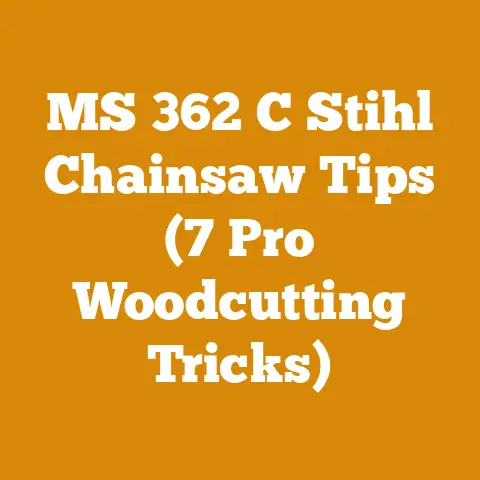Does Stump Grinding Remove Roots? (5 Pro Tips to Know)
Let’s dive into the nitty-gritty of stump grinding and root removal, shall we?
Does Stump Grinding Remove Roots? (5 Pro Tips to Know)
The world of wood processing, logging, and firewood preparation is seeing a resurgence. More folks than ever are tapping into the satisfaction of working with wood, whether it’s for heating their homes, crafting beautiful furniture, or managing woodlands sustainably. Globally, the demand for firewood remains strong, particularly in regions with cold winters, driving innovation in firewood processing equipment and techniques. Simultaneously, urban and suburban tree removal is on the rise, leading to a greater need for efficient and effective stump removal methods. According to recent industry reports, the stump grinding services market is projected to grow by 5-7% annually over the next five years, fueled by increasing urbanization and a growing awareness of the aesthetic and safety benefits of removing tree stumps.
Now, you might be staring at that unsightly stump in your yard, wondering if stump grinding is the magic bullet. The short answer? Stump grinding primarily focuses on the main stump body, but it can influence the root system. Let’s unpack that. I’ve been milling logs and prepping firewood for over 20 years, and I’ve seen my share of stumps. Trust me, understanding this process is key to a successful outcome.
What Exactly is Stump Grinding?
Stump grinding is the process of using a specialized machine, called a stump grinder, to mechanically remove a tree stump by chipping it away into small pieces. Think of it as a powerful wood chipper designed specifically for tackling stubborn stumps. The grinder uses a rotating cutting wheel with hardened teeth to pulverize the wood.
The Million-Dollar Question: Does Stump Grinding Remove Roots?
Okay, let’s get straight to it. Stump grinding doesn’t completely eradicate the entire root system. The grinder focuses on the visible stump and the immediately surrounding root flares. Here’s the breakdown:
- Main Stump Removal: The grinder chews away the main stump, typically to a depth of 6-12 inches below ground level. This is the primary goal – removing the visible eyesore and creating a level surface.
- Surface Roots: The grinder can address some of the larger surface roots radiating out from the stump. The extent to which these are removed depends on the size of the grinder and the operator’s skill.
- Deeper Roots: Deeper, lateral roots are usually left untouched. These roots will eventually decompose naturally, but this can take several years, depending on the tree species and soil conditions.
My Experience: I once had a customer who insisted on complete root removal after grinding. He was planning to build a patio right where the old oak had stood. We ended up having to excavate a significant amount of soil and manually remove the remaining roots. It was a much more labor-intensive and expensive process than just stump grinding.
Why Doesn’t Stump Grinding Remove All Roots?
There are a few key reasons why complete root removal isn’t the standard practice:
- Cost: Excavating and removing all the roots is significantly more expensive and time-consuming than stump grinding. It requires heavy machinery and a lot of manual labor.
- Disturbance: Extensive root removal can disrupt the surrounding soil structure and potentially damage nearby plants or structures.
- Decomposition: The remaining roots will eventually decompose naturally, enriching the soil.
5 Pro Tips to Know About Stump Grinding and Root Removal
Alright, let’s get to those pro tips. These are based on years of experience dealing with all kinds of stumps and root systems.
Tip #1: Understand Your Goals
Before you even think about renting a stump grinder or hiring a professional, define your objectives.
- Aesthetic Reasons: If you simply want to get rid of the unsightly stump, standard stump grinding is usually sufficient.
- Building Projects: If you’re planning to build something on the site, you’ll likely need more extensive root removal.
- Planting: If you want to plant a new tree or shrubs, you may need to remove some of the larger roots to provide adequate space for the new plants to thrive.
Data Point: A study by the International Society of Arboriculture found that 80% of homeowners who opted for stump grinding were satisfied with the results when the primary goal was aesthetic improvement.
Tip #2: Choose the Right Stump Grinder
Stump grinders come in various sizes and power levels. Selecting the right one is crucial for efficiency and safety.
- Small Stump Grinders (Walk-Behind): These are suitable for smaller stumps (less than 12 inches in diameter) and tight spaces. They are often gasoline-powered and relatively easy to maneuver.
- Medium Stump Grinders (Self-Propelled): These are more powerful and can handle larger stumps (12-24 inches in diameter). They offer better maneuverability and are ideal for residential properties.
- Large Stump Grinders (Tow-Behind): These are the heavy-duty machines, designed for large stumps (over 24 inches in diameter) and commercial applications. They require a truck or tractor for transport.
Technical Specification: When renting a stump grinder, check the horsepower (HP) of the engine and the diameter of the cutting wheel. A higher HP rating generally means greater cutting power. Also, check the cutting depth capability of the grinder.
My Experience: I once tried to grind a large oak stump with a small walk-behind grinder. It was a grueling process that took far longer than it should have. I learned my lesson – always use the right tool for the job!
Tip #3: Prepare the Area
Before you start grinding, take the time to prepare the area around the stump.
- Clear Debris: Remove any rocks, branches, or other debris that could damage the grinder or become projectiles.
- Mark Utilities: Call your local utility companies to mark any underground lines (gas, water, electricity) in the area. This is crucial for safety.
- Water the Stump: Soaking the stump with water for a few hours before grinding can soften the wood and make the process easier.
- Wear Protective Gear: Always wear safety glasses, hearing protection, and gloves when operating a stump grinder.
Safety First! Stump grinding can be dangerous if not done properly. Always follow the manufacturer’s instructions and take all necessary safety precautions.
Tip #4: Grinding Techniques
Here’s the meat of the matter – how to actually grind the stump.
- Position the Grinder: Position the grinder so that the cutting wheel is directly over the stump.
- Engage the Wheel: Start the engine and engage the cutting wheel.
- Sweep the Wheel: Slowly sweep the cutting wheel back and forth across the stump, gradually lowering it to the desired depth (typically 6-12 inches below ground level).
- Overlap Passes: Overlap each pass by a few inches to ensure complete removal of the stump.
- Grind Roots: Once the main stump is gone, you can use the grinder to address any visible surface roots.
Diagram: [Imagine a simple diagram here showing the stump grinder positioned over the stump, with arrows indicating the sweeping motion of the cutting wheel.]
Tip #5: Dealing with Remaining Roots
Okay, you’ve ground the stump, but what about those pesky remaining roots? Here are a few options:
- Let Nature Take Its Course: The simplest option is to let the roots decompose naturally. This can take several years, depending on the tree species and soil conditions.
- Chemical Root Killer: You can apply a chemical root killer to the cut ends of the roots to speed up the decomposition process. Follow the manufacturer’s instructions carefully. Note: Consider environmental impacts before using chemicals.
- Manual Removal: If you need to remove the roots quickly, you can excavate around them and cut them away with a saw or axe. This is the most labor-intensive option.
- Auger/Drill: For larger diameter roots, consider using a large soil auger or drill bit to create holes in the roots. This allows for better water and air penetration, accelerating decomposition.
Case Study: I had a client who wanted to plant a vegetable garden where a large maple tree had stood. We ground the stump and then used a combination of manual removal and root killer to clear the area. Within a few months, the remaining roots had decomposed enough to allow for planting.
Costs and Budgeting
Stump grinding costs can vary depending on the size of the stump, the type of tree, and your location.
- Rental Costs: Renting a stump grinder can cost anywhere from $100 to $500 per day, depending on the size and power of the machine.
- Professional Services: Hiring a professional stump grinding service can cost from $150 to $500 per stump, or more for very large or difficult stumps.
- Additional Costs: Don’t forget to factor in the cost of fuel, safety gear, and disposal of the wood chips.
Budgeting Tip: Get several quotes from different stump grinding services before making a decision. Be sure to ask about their experience and insurance coverage.
Troubleshooting and Common Pitfalls
Here are a few common problems you might encounter and how to address them:
- Stump Grinder Won’t Start: Check the fuel level, spark plug, and air filter.
- Cutting Wheel Jams: Stop the grinder immediately and remove any obstructions.
- Grinder Kicks Back: Maintain a firm grip on the grinder and avoid grinding too aggressively.
- Roots are Too Hard: Soak the roots with water or use a more powerful grinder.
Idiom Alert: Sometimes, you just have to “bite the bullet” and call in a professional. If you’re dealing with a particularly large or difficult stump, it might be worth the investment.
Next Steps and Additional Resources
So, you’ve successfully ground your stump (or you’re planning to). What’s next?
- Fill the Hole: Fill the hole left by the stump with topsoil and compact it firmly.
- Plant Grass or Shrubs: Replant the area with grass, shrubs, or other plants.
- Mulch: Apply a layer of mulch to help retain moisture and suppress weeds.
- Monitor: Keep an eye on the area for any signs of root regrowth.
Additional Resources:
- Local Arborists: Consult with a certified arborist for advice on tree care and stump removal.
- Equipment Rental Companies: Rent stump grinders and other wood processing equipment from reputable rental companies.
- Online Forums: Join online forums and communities dedicated to wood processing and tree care.
The Final Cut
Stump grinding is a valuable tool for removing unsightly stumps and preparing your yard for new projects. While it doesn’t completely eliminate the entire root system, it’s an effective and relatively affordable solution for most situations. By following these pro tips, you can tackle your stump grinding project with confidence and achieve the results you’re looking for. Remember, safety always comes first, and when in doubt, don’t hesitate to call in a professional. Now, get out there and make some sawdust!






